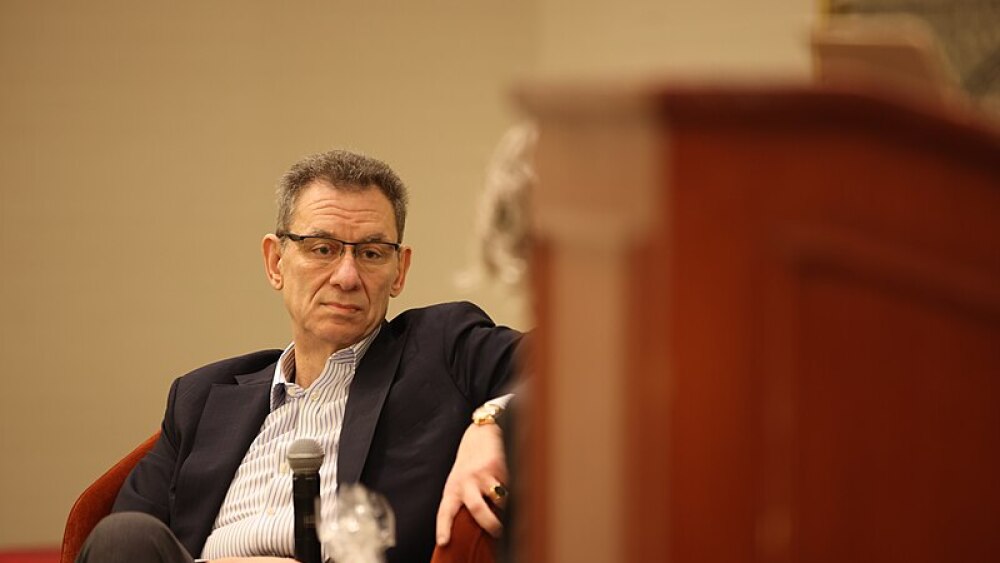EY’s 2025 Biotech Beyond Borders report provides a sobering snapshot of the industry’s financial health, with more and more companies facing cash runways of less than one year. The analyst firm’s leaders urge a return to basics for biotech.
Some 39% of biotechs assessed in 2024 were set to run out of cash within 12 months, according to EY’s latest industry report published on Wednesday. This marks the highest level this financial health metric has reached in at least six years, up from 31% in 2022 and 2023, and just 18% in 2021.
“That number keeps creeping up,” Arda Ural, EY Americas life sciences leader, told BioSpace.
The startling statistic reflects the “really tough funding environment” facing the sector, Ashwin Singhania, EY-Parthenon partner/principal of life sciences strategy, said during an exclusive roundtable event on June 12.
Those most likely to survive the prolonged capital drought are taking a disciplined approach, Ural said. This includes rethinking investor engagement, tying funding to clearer milestones and narrowing focus to lead assets. Some companies are also exploring non-dilutive options like royalty deals and leaning more on outsourcing to extend runway, noted Rich Ramko, EY Americas life sciences sector and biotechnology leader.
A dwindling cash supply “is also forcing [companies] to consolidate, reverse merge, layoff staff, maybe consolidate their portfolio in addition to consolidating their operations, drop some of their assets . . . and just focus on the lead asset, which is your inflection-value generating asset.”
In light of their findings, EY’s leadership urged industry to return to the basics.
“Biotech leaders have to fundamentally reassess how they allocate capital, communicate with stakeholders and make tough portfolio calls early,” Ural said. “That’s how you navigate [the biotech market] volatility.”
The Looming Cash Risk and Signs of Hope
The high number of companies running out of cash underscores a sharp decline in financial resilience across the industry, according to the 2025 Biotech Beyond Borders report. Over the same period, the share of biotechs with more than five years of cash fell from 24% in 2021 to 18% in 2024.
Despite the alarming cash crunch, the report shows that not all biotech companies are in crisis. The 2025 outlook presents a “mixed bag,” Singhania said.
On the positive side, biotech saw modest top-line growth in 2024, with industry net revenues up nearly 7% compared to 2023, while R&D expenditures increased by almost 12%, signaling continued faith in the long-term promise of scientific innovation, Singhania said. Early-stage venture capital (VC) was another bright spot last year, with $15 billion deployed in 2024—an increase from $12 billion in 2023.
But these gains were not widely distributed across industry. The number of early-stage VC deals dropped 20% year over year, reflecting a trend of larger checks going to fewer firms.
It’s “a tale of the haves and have-nots,” Ramko said.
Across the broader landscape, signs of strain are mounting. The biotech workforce contracted by about 5% in 2024 as companies cut costs and narrowed their focus. 2024 total financing— venture, IPOs, follow-ons and debt—dropped nearly 10% from 2023, down to $73 billion, Singhania said. In Q1 2025, just $17 billion was invested, continuing the downward trend.
With macroeconomic and policy headwinds like President Donald Trump’s drug pricing initiative, the threat of new tariffs and looming patent cliffs still clouding the investment outlook, EY leaders warned that the capital gap is likely to widen.
“There’s no playbook for what’s happening right now,” Ural said. “What got us here won’t get us [to recovery].”
Back to Biotech Fundamentals
Earlier this year, biotech’s funding freefall was likened to a “nauseating roller coaster” that continues to repel even the most risk-tolerant investors. The ups and downs have left many stuck between underperformance and undercapitalization, with few clear paths forward.
Ural, Ramko and Singhania urged the biotech industry to return to fundamentals. Pre-revenue companies should tightly manage resources, cut costs as needed and demonstrate they can reach—and surpass—their next value milestone, they said. Portfolio optimization will be key through the rest of 2025, while revenue-generating biotechs must focus on scenario planning around workforce shifts, manufacturing efficiency and tax-smart supply chains, they added.
During the roundtable, the EY leaders also detailed how biotech companies are recalibrating their approach to fundraising and investor relations in this unforgiving capital environment.
Financing rounds are increasingly tied to strict milestones, Ramko said, with “investors holding management teams’ feet to the fire.” Traunched deals—intended to reduce investors’ risk—along with smaller upfronts and tighter collaboration terms, are becoming the norm. “It’s no longer just about hitting the next inflection point; it’s about having enough cash to get beyond it,” Ramko continued.
Investor expectations are also changing. Ramko noted that in platform companies, funders are zeroing in on the lead asset, often disregarding secondary programs entirely. That dynamic is prompting companies to sharpen operational focus and discipline, Ramko told BioSpace.
In this high-pressure environment, Ural and Ramko found that biotech executives are increasingly turning to outsourcing and managed services. By farming out back-office operations and other non-core functions, companies can reduce overhead and maintain lean teams, while concentrating resources on value-driving R&D efforts, Ramko said.
Amid such strategic shifts and continued volatility in the near term, EY’s leaders caution that crystal-ball forecasts will be difficult. “This year is probably one of the toughest to predict,” Ural said.






